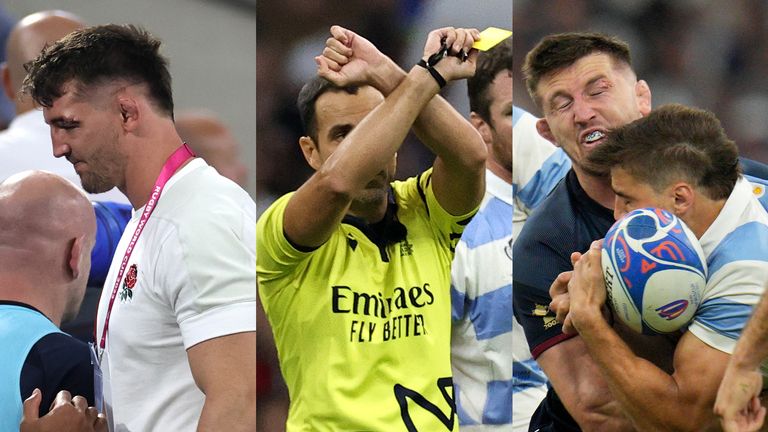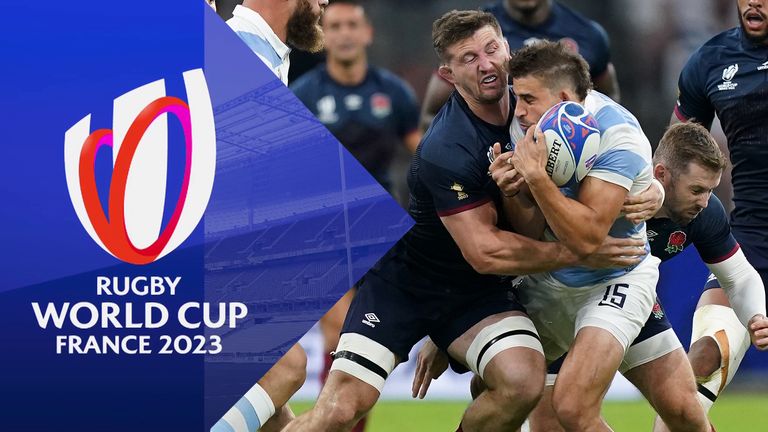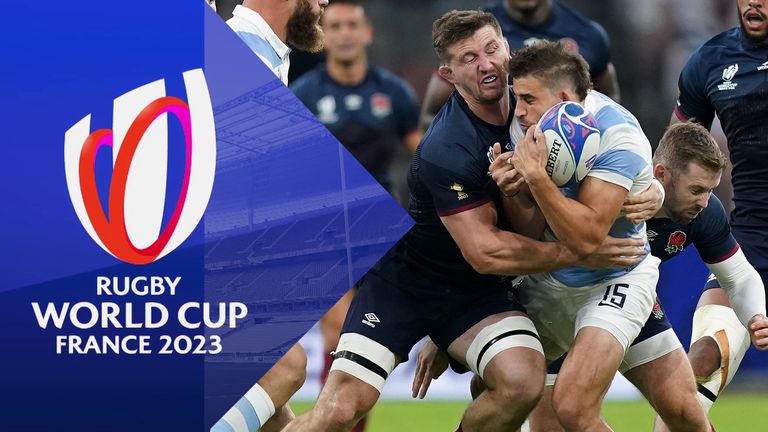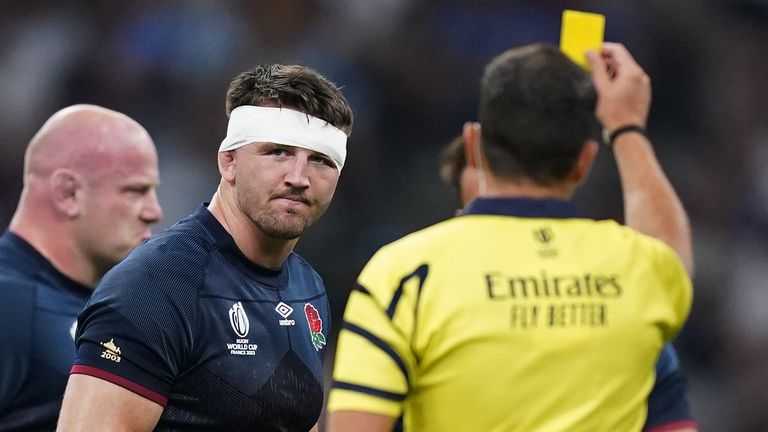
Rugby World Cup: Rugby union’s head contact laws in spotlight after incidents on opening weekend | Rugby Union News
Jody
- 0

England’s Tom Curry was sent off after making head-on-head contact with Argentina’s Juan Mallia in their Pool D match
The application of rugby union’s rules around head-on-head contact is in the spotlight again following three incidents in the first round of matches at this year’s Rugby World Cup.
On Saturday, England saw a player shown a red card for the fourth time this year when Tom Curry was sent off following a head-on-head collision with Argentina full-back Juan Cruz Mallia just three minutes into the contest.
The following day, Chile’s Martin Sigren was only shown a yellow card for a seemingly similar incident in their match against Japan, while Scotland’s encounter with South Africa saw no action taken when Jack Dempsey appeared to clash heads with Jesse Kriel in the first minute.

Please use Chrome browser for a more accessible video player

Tom Curry will attend a hearing for his red card given in England’s opening World Cup match against Argentina
Here, we take a look at the process behind those decisions being made, and what those in the game are saying about the incidents…
What do World Rugby’s laws say?
Head-on-head contact in the tackle comes under Law 9 of the Laws of Rugby Union, which covers foul play. Law 9.11 dictates “Players must not do anything that is reckless or dangerous to others” and the referee is always entitled to issue a yellow or red card for any actions which contravene that.
Under the head contact decision-making process for officials issued by the global governing body in March 2021, considerations for whether foul play occurred in the case of head-on-head contact are if the actions of the player were intentional, reckless, and/or avoidable.
Mitigation in terms of issuing a red or yellow card as a sanction along with a penalty can be applied if there was a sudden or significant change in height or direction from the ball carrier, a late change in dynamics due to contact from another player, and the tackler making an effort to wrap their arms around the ball carrier.

Please use Chrome browser for a more accessible video player

James Cole visited Grasshoppers RFC to see what they made of the RFU’s decision to reduce the legal tackle height across community rugby from the 2023/24 season
However, there can be no mitigation if an act of foul play is deemed to be intentional or highly reckless.
What part do the TMO and FPRO/Bunker play?
Curry’s dismissal and the sin-binning issued to Chile captain Sigren both fell under the purview of the Bunker review system which has been introduced for this World Cup to allow a Foul Play Review Official (FPRO) extra time to adjudicate on incidents where a red card is not a clear and obvious sanction.
In each instance, the original incident was flagged to the on-field referee by the Television Match Official, with Mathieu Raynal and Nic Berry both issuing yellow cards in the first instance after viewing replays on the big screen and crossing their arms to indicate a Bunker review would take place as well.
Once a player is in the sin-bin, the FPRO has up to eight minutes to review the decision at length to decide if the act of foul play warrants upgrading to a red card. If not, the player will return to the field after their 10 minutes in the sin-bin has elapsed.

Referee Nic Berry shows a yellow card in the match between Japan and Chile
On Saturday, it was communicated to Mr Raynal Curry’s actions were worthy of a red card and that was subsequently issued while the England flanker was on the sidelines. However, Sunday’s incident saw Chile scrum-half Sigren escape without further punishment and he was able to return.
The views of the pundits
Naturally, the incidents in both England and Scotland’s games provoked plenty of debate and discussion among former players and coaches.
England 2003 World Cup winner Lawrence Dallaglio, working for broadcaster ITV, agreed Curry’s head-on-head contact with Mallia with was worthy of a yellow card but not of a red.
“It is head on head, so I do understand it’s a yellow, but for me it’s accidental,” Dallaglio said.

Tom Curry’s yellow card was upgraded to a red following a Bunker review
“Tom Curry stands his ground, I believe it’s Mallia who comes down from quite a height, so I believe he should have been allowed back on the field. It’s a really, really tough, borderline decision.”
That view was shared by fellow studio pundit Sir Clive Woodward, with the World Cup-winning head coach expanding on his views in his Mail On Sunday newspaper column.
“Curry’s head-on-head contact with Juan Cruz Mallia was what I call a ‘rugby incident’,” Woodward wrote. “The sport is in trouble in my opinion if those sorts of collisions are deemed worthy of a sending off.
“I really do not know what Curry was supposed to do to not get into that position. I think it was worthy of a yellow card. Curry’s incident was neither deliberate not vindictive.”
It’s frustrating for players, coaches, and fans alike because there isn’t consistency.
The law is clear, but the upholding of that law and the use of Television Match Officials is not consistent.
Jesse Kriel on Jack Dempsey was a clear head-to-head collision, but it wasn’t even penalised or looked at. If you look at that, that should really be at least a yellow card.
Then you go to the Bunker review system where they can upgraded it to a red – it was potentially a red card and that changes the complexion of the game.
World Rugby need to sort this out in the interests of fairness because it’s very frustrating.
It’s all very well having these systems in place, but there has to be consistency. If Tom Curry’s is a red, then you would argue Jesse Kriel’s is a red.
However, former Wales international Andrew Coombs felt a red was justified as World Rugby toughens up sanctions on high tackles in an effort to mitigate against the dangers of players suffering head injuries.
“Dallaglio and Woodward proving they are stuck in a different era with their half-time analysis of the Tom Curry red card,” Coombs posted on X (formerly Twitter).
“I really feel for Curry but where player welfare comes first, the incident warranted a red card. No malice in the tackle, just has to get lower!”
Meanwhile, former Scotland international John Barclay was staggered the TMO opted to not intervene on Sunday when Kriel appeared to clash head on head with Dempsey.

South Africa’s Jesse Kriel avoided any sanction over a possible head-on-head collision with Scotland’s Jack Dempsey
“It is a red card,” Barclay told ITV. “He comes from distance, clear line of sight, no drop in height and he applies force, it is head on head.”
Borthwick: Each incident is different | Townsend laments ‘inconsistencies’
Neither England head coach Steve Borthwick nor Scotland boss Gregor Townsend would be drawn too much on what they though of the incidents in their respective matches.
“Each incident is different,” Borthwick said when asked about the red card for Curry, who will face an in-person disciplinary hearing on Tuesday evening. “We’ll have a good look at it.
“It will go through a disciplinary process now and it would be wrong for me to start commenting on it.”

Scotland head coach Gregor Townsend feels there is inconsistency in how rugby union’s head-contact law is applied
Townsend, meanwhile, expressed frustration that there was no intervention from the TMO and lamented what he sees as inconsistency in the way the law around head contact is being applied.
“I saw it from two screens away and it did look like it was a head-on-head collision, and I was expecting the TMO to come in to make the referee aware of that,” Townsend said.
“There are still inconsistencies in seeing these things so we are obviously frustrated by that, but we are more frustrated by our own performance.”


